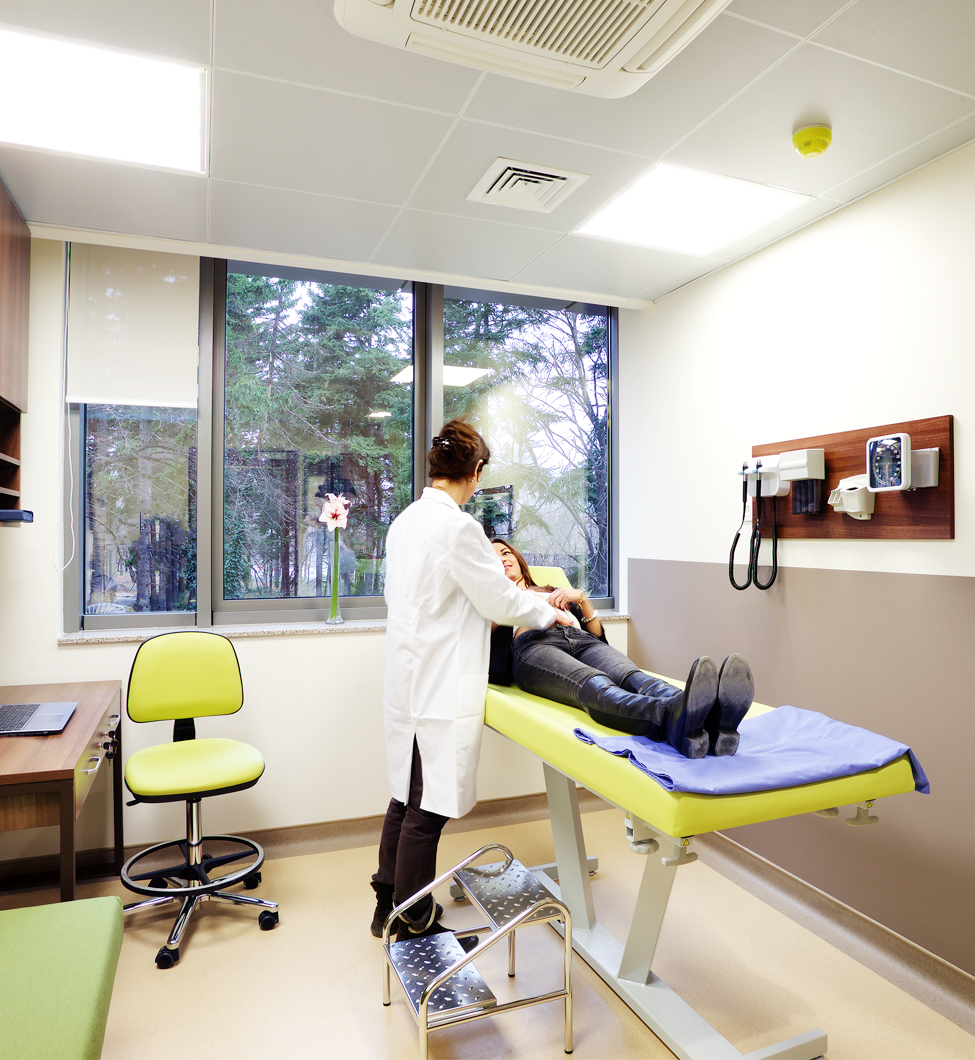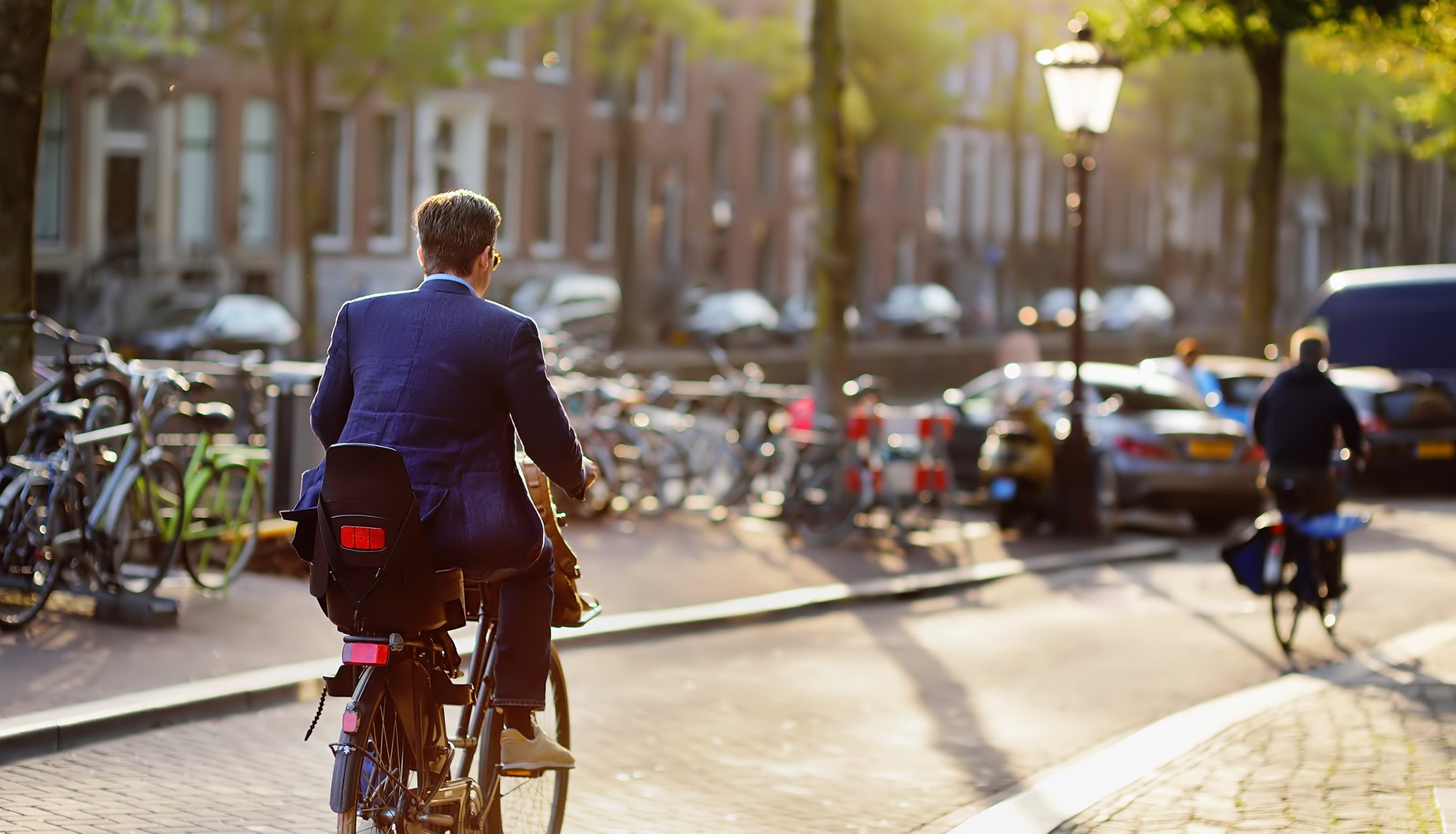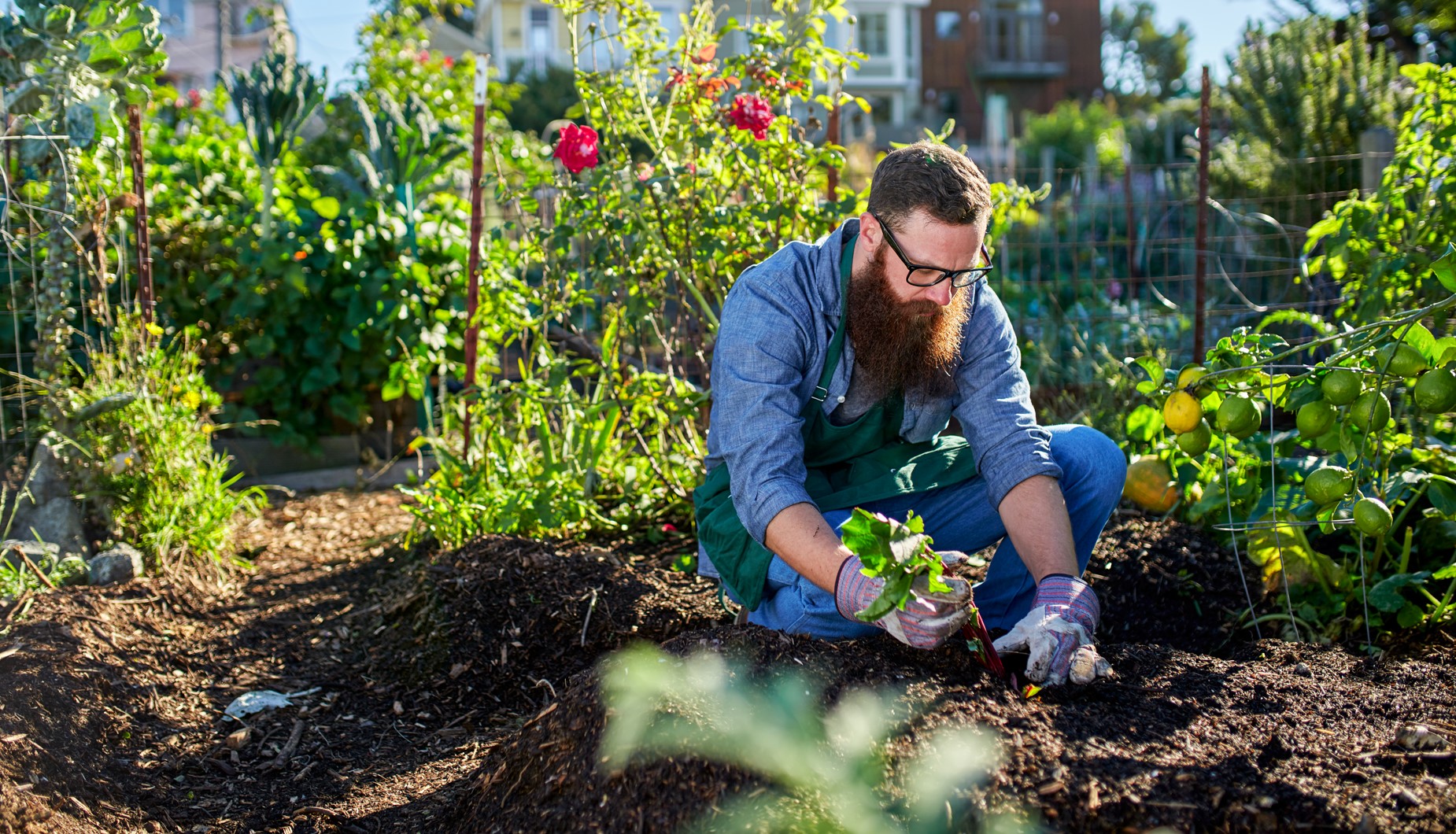More healthy years and healthy society in 2040

More healthy years or Healthy Ageing in other words. This theme has been high on the agenda in the north of the Netherlands for more than 15 years. Like many other parts of the world, this region is also noticing the consequences of an ageing population. Healthcare costs are going up and vacancies in the healthcare system are becoming more difficult to fill. Various reports sketch a doom scenario for the future - a growing group of lonely older people struggling with a burden of chronic illnesses, sky-high healthcare costs and not enough people to provide care. This is accompanied by a warning that the difference in health between highly educated and low-skilled people will only increase.
The TopDutch region is not prepared to accept this doom scenario on face value. Scientists, entrepreneurs, social organizations, healthcare institutes, governments and citizens are working closely together with a clear focus on a different and better future. From the region they are moving to a world where more people enjoy good health for longer. Due to these years of focus on healthy ageing, the European Commission even identified the TopDutch region as a leading European best-practice region for Active and Healthy Ageing.
What would a healthy society of the future - say 2040 - look like? Here is an outlook from three different perspectives:
Public health economist Jochen Mierau
It is the firm conviction of Professor of Public Health Economics Jochen Mierau that continuing in this same manner is simply not an option. ‘At this rate we would have long waiting lists for health care in 2040, a lot of people would be unhappy and healthcare costs would be enormous.’ The Netherlands Bureau for Economic Policy Analysis predicts that the Netherlands will spend a quarter of GDP on healthcare in 2040; for a family that would amount to 35 to 50 percent of their disposable income. Furthermore, a quarter of the professional population would have to work in health care in 2040. Jochen Mierau continued ‘We know that we will have more older people in 2040 and that younger generations are a smaller proportion of the European demographic. In other words, we will have fewer people to provide professional or informal care. We also notice that more people develop one or more chronic conditions and that conditions such as depression and dementia are on the rise. We need to design policy to ensure it has the desired impact.’

Health will be a more integrated aspect of society.
Jochen Mierau, Public health economist
That was exactly the reason why Jochen Mierau set up the Aletta Jacobs School of Public Health, which is a collaboration between University of Groningen, the Hanze University of Applied Sciences and the Groningen University Medical Center. The purpose is for many different disciplines, such as economics, law, town and country planning, behavioral sciences, to develop knowledge together in order to create a healthy society in the north of the Netherlands. And to use this knowledge actively in the development, evaluation and continuous improvement of policy. ‘It helps that we have already spent years working together with knowledge institutes, governments, health insurers and health-care institutes on Healthy Ageing in the north of the Netherlands.’

Jochen Mierau has a vision of a completely different set-up for healthcare in 2040. There will be fewer hospitals, and patients will only go there for operations and highly specialized healthcare. Health care will be closer to people in health centers. ‘The GP will be at the heart of the health center’, commented Jochen Mierau. ‘Today, GPs are often busy with curing the damage of a poor lifestyle. In the future, they will have to focus on staying healthy and on a good quality of life. On diet, a properly ventilated house, exercise and a social network.’ To achieve this, a GP will work closely together with others, such as dietitians, psychologists and physiotherapists. Specialists from the hospital will have a surgery in the health center for more specialized care or follow-up care after an operation.
‘Health will be a more integrated aspect of society, at social and individual level’, argued Jochen Mierau. Local authorities will need to strive for a healthy living environment in their policies. Neighborhoods need to be set up to encourage exercise and social interaction. Despite the extra jobs it provides, a new branch of a fast-food chain may not be the best idea for a neighborhood with lots of obesity. ‘If we make local authorities jointly responsible for the consequences of a poor preventive policy, it will become more attractive for them to invest in health. A new form of insurance, where the insurer purchases care for part of the population for a long term, can make investment in prevention more attractive.’
For an individual, staying healthy for longer will become an important part of their life. Everyone will have insight into their medical history in their Personal Digital Health Environment, but also into factors they can measure themselves with wearable technology, such as activity, sleep, stress. ‘That provides everyone with control over their own health. For those for whom that is difficult or who struggle with digital technology, the GP can provide support.’
The latter is important. We already have significant differences in health between groups, and these differences are only expected to increase. ‘Rich neighborhoods tend to be healthier than the poorer ones. But also when we compared all the neighborhoods in the Netherlands, we noticed that there were many differences between the poor neighborhoods; there are many healthy poor neighborhoods. By looking at what they do and by reducing the differences between the poorer neighborhoods, we can save a billion euros in healthcare costs per year.’
Health centers in 2040
‘Your cholesterol is too high. It increases the chance of cardiovascular diseases. Make an appointment for advice with the health center.’ In the year 2040 everyone has insight into their own health data. Sensors measure everything - from blood pressure, blood values and the composition of the microbiome to activity, sleep and stress. Furthermore, everyone's genetic profile is recorded at birth in order to chart the risk of certain conditions. These data, together with diagnoses and treatment by doctors, end up in the Personal Digital Health Environment (Persoonlijke genzondeheidsomgeving, PGO) The PGO analyses the data and warns the person concerned or their GP of health risks.

The system almost didn't happen. Around the introduction of the PGOs at the beginning of the 2020s, there was a lot of protest because access to and security of a number of PGOs were not in order. Now, 20 years later, all of those problems have been solved. The PGO has become part of life and the developers of sensor technology and Fitbits are doing a roaring trade. The comprehensive current health information, together with big data about truly effective prevention, forms the basis for personalized advice for staying healthy. For one person exercise to maintain a healthy weight is important, another needs more support with dealing with stress. When necessary, a doctor can intervene early, precisely and in a personalized manner with information from the PGO. Research has demonstrated that this can prevent plenty of suffering and healthcare costs.
Professor of Health Law in a Global Context Brigit Toebes
Globally, 70 to 80 percent of people die as a result of a chronic condition, such as cancer, diabetes or cardiovascular diseases. Many of these deaths are premature - half of the people who die before they are 70 years old, die due to a chronic condition. In the Netherlands, a country with around 17 million inhabits, some 9 million people have a chronic condition. ‘We know that these chronic conditions can be reduced by half by living healthier. By cutting back on smoking, unhealthy food, harmful use of alcohol and lack of exercise’, explains Brigit Toebes, Professor of Health Law in a Global Context at the University of Groningen.
Law can help to make a healthy lifestyle accessible to everybody.
Brigit Toebes, Professor of Health Law in a Global Context

‘We are capable of saving enormous amounts of suffering and money, and we should. If we consider international law, everyone is entitled to healthcare and to an environment where healthy living is possible.’ At the moment, this environment is not available to every human being, not even in a rich country like the Netherlands. Statistics Netherlands considered the differences by level of education. Highly educated people live around seven years longer than low-skilled people and feel healthier for 18 years longer. A difference that will only get worse according to experts. Highly educated people, who often have a higher income, have easier access to a healthy diet and sport. Low-skilled people are more vulnerable to broader socio-economic issues, such as unemployment, worries about debt, and an environment where smoking is much more common than going for a run.
The good news is that legislation and regulations can help to reduce chronic conditions and to make a healthy lifestyle accessible to everyone, continued Brigit Toebes. ‘Significant hikes in the price of cigarettes, like in the United Kingdom or in Australia, is proven to be effective in reducing smoking. Just like reducing the number of points of sale, making packaging more neutral and making certain environments smoke-free.’ The trend is already there to see. For example, Groningen aims to have the first non-smoking generation by banning cigarettes from public spaces. ‘There is always a tension between imposing rules topdown and personal freedom. However, you do see a shift in standards. When smoking in restaurants was banned, there was plenty of protest, but now it is completely normal.’
In the future, unhealthy food and alcohol will be less easily available, expects Brigit Toebes. Regulations can be used to have them in a less prominent space in shops. Marketing can also be tackled dramatically. Food with lots of sugar, fat and salt will have clear warning labels on the packaging and will be made less attractive to children, imagines Brigit Toebes. With subsidies, healthy food can be made cheaper. Alcohol could be much more expensive and no longer available from the supermarket. ‘Alcoholic drinks that drink like lemonade with cheerful bottles that really appeal to young people, they will be out of the question completely. It is down to national governments to design their legislation and regulations in such a way that they offer their citizens a healthy environment.’

Healthy supermarkets in 2040
When you walk around a supermarket in 2040, it will be hard to imagine that 20 years ago, the aisles of the supermarket were full of sweets, chips, and sugary soft drinks. In those days there was often a complete corner with alcoholic drinks and you could buy cigarettes at the checkout. An unhealthy lifestyle was made easy back in those days. Strange, because even in 2014 figures from the World Health Organization demonstrated that more than half of chronic conditions could be prevented.

Now most food in the supermarket is plant-based. Processed foods, like bread and bean burgers, have a clear list of ingredients that demonstrate that they comply with strict rules on their salt content. Healthy ready-to-eat child treats and snacks are at eye level; for the limited range of chips and sweets in neutral bags you have to bend down. Beer and cigarettes are nowhere to be seen. Since 2024 they can only be bought online and in dedicated shops. Manufacturers have seen massive drops in their sales. Another major boost came when central government banned smoking almost everywhere. In 2008, the government started by banning smoking in restaurants, bars and hotels. Ten years later, the city of Groningen expressed its ambition to become the first smoking-free city in the Netherlands and started setting up smoking-free zones around schools, playgrounds and the hospital. A little bit later the central government - with plenty of opposition domestically, but supported by a successful anti-smoking policy in Finland - came up with a general smoking ban in public spaces.
Professor of Architecture, Urbanism and Health Cor Wagenaar
‘Preventing illness by designing cities differently is much more effective and cheaper than trying to cure people once they have become ill’, said Professor of Architecture, Urbanism and Health, Cor Wagenaar. ‘As soon as someone walks into the hospital, you’re actually too late. You have to make sure that it doesn't get that far by making the city healthier. A healthy city invites people to exercise and to meet and the air, inside buildings and outside, is clean and healthy. Making our cities healthier requires drastic redesign plans.’

You can achieve much bigger health gains on the streets than in hospitals.
Cor Wagenaar, Professor of Architecture, Urbanism and Health
In busy urban areas, like Manhattan, there is more reason to go out and to meet people. A healthy city has lots of facilities, such as theaters, museums and libraries, and ‘programmed’ green spaces.’ No empty landscaped areas where nobody feels safe, but parks where things are going on. ‘Bars and restaurants are easy to achieve and it would be great if you could play sports. Communal gardens work well too; they provide exercise, healthy food and social contact and promote health in the process.’
Healthy cities in 2040
In many cities in the north of the Netherlands you can see what a healthy city looks like. For example in Assen, a provincial capital in the TopDutch region, cars disappeared from neighborhoods 15 years ago and made room for pedestrians and cyclists. The city is now only open to electric cars, but most people get on the self-driving electric buses that drive throughout the entire city. Energy now only comes from clean sources, such as sun and wind. The air quality improved massively, as did the people of Assen.

‘Programmed green spaces’ was another intervention with great effect. No empty bits of landscaping, but large parks and mini-gardens with stuff going on. Where residents garden together, sit on a bench or a terrace, play sports or go for a walk. Smooth paths that present no problems to mobility scooters and lots of benches ensuring that older people continue to move about and don't become lonely. Nothing that they couldn’t have thought of back in 2020, yet it still took time for the government to invest in landscaping in neighborhoods on a large scale. Climate change produced support too - the landscaping provides cool spaces during the increasingly hot summers and capture water when there is a downpour.
CONTACT
Join TopDutch
So what will be your next move? How will your company join the fight for a healthier population? Contact our network of knowledge-intensive institutions and innovative and entrepreneurial companies. You’ll soon see for yourself how quickly things get done here in the Northern Netherlands.
Learn more about TopDutch!
"*" indicates required fields
